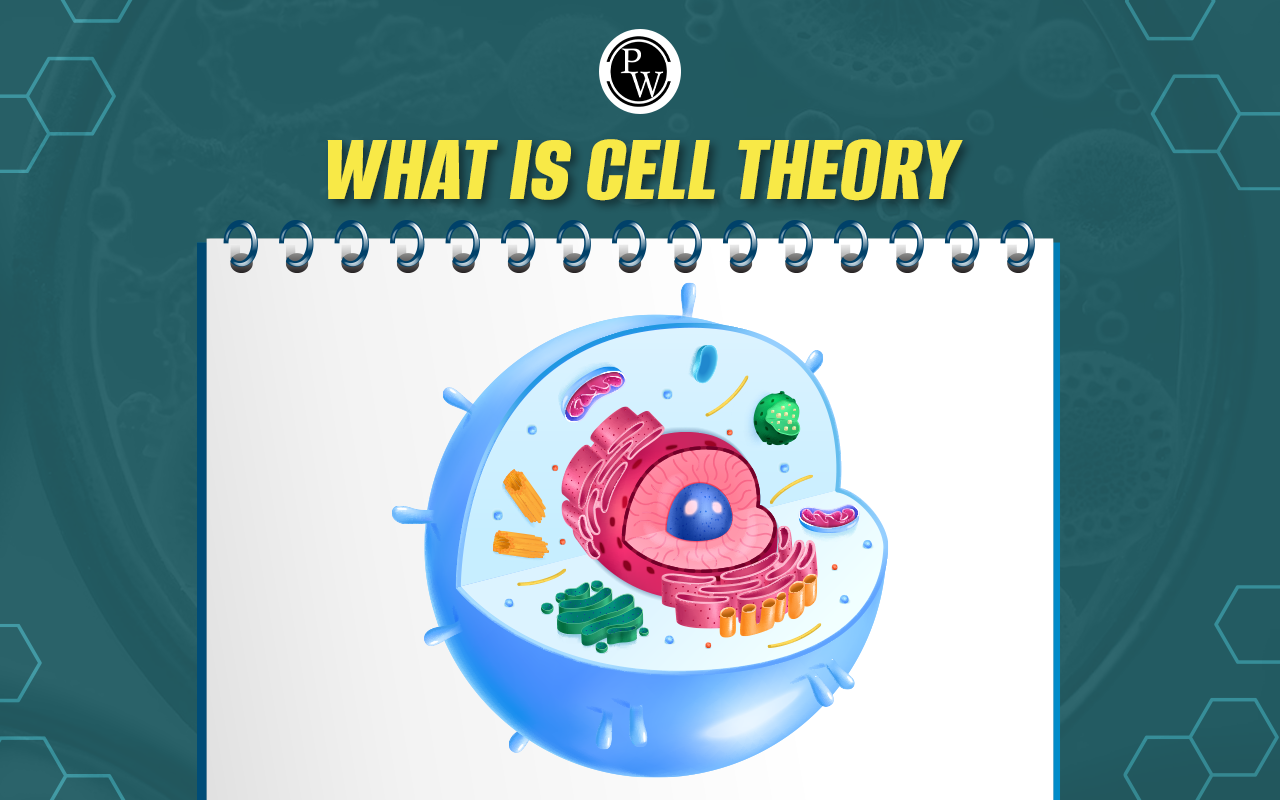
DNA Polymerases: For all living organisms, reproduction—whether at the cellular level or involving entire organisms—begins with the accurate copying of DNA. The enzyme DNA polymerase carries out this critical task. DNA polymerase is a complex, multi-subunit enzyme responsible for replicating DNA. It converts a single strand of DNA into a complete, double-stranded molecule by following the base-pairing rules established by Watson and Crick.
Additionally, DNA polymerase proofreads the newly formed DNA strand and corrects any mistakes by removing incorrect nucleotides. Detailed NEET Biology Notes on DNA polymerase for NEET Biology are provided below in the article.
What are DNA Polymerases?
A DNA polymerase is an enzyme that belongs to a group responsible for building DNA molecules from nucleoside triphosphates, which are the basic units of DNA. These enzymes play a crucial role in DNA replication, working together to create two identical copies of a DNA strand from one original strand. During this process, the DNA polymerase reads the existing DNA strands to produce two new strands that match the originals.
The enzyme facilitates a chemical reaction where deoxynucleoside triphosphate combines with a DNA strand, releasing pyrophosphate and extending the DNA strand by adding one nucleotide at its 3'-end. Every time a cell divides, DNA polymerases are essential for duplicating the cell's DNA, ensuring each daughter cell receives an exact copy of the original DNA molecule. This process ensures genetic information is faithfully passed on to future generations.
Difference Between Gene and DNA
DNA Polymerase Structure
There are various types of DNA polymerases, each with its own structure and specific role (described below). All of them are involved in replicating and/or repairing the DNA molecule, but they function at specific times and in specific organisms. Despite their differences, all DNA polymerases share certain structural features:
- A DNA-binding domain that tightly wraps around the single-stranded template DNA molecule.
- A polymerizing domain where the reaction to join individual nucleotides to the growing DNA strand occurs (the enzyme's active site).
- Optionally, an exonuclease domain that can remove any incorrectly paired nucleotides from the newly synthesized strand.
DNA Polymerase III (often abbreviated as DNA Pol III) is a crucial and extensively studied example of a DNA polymerase. It is the main enzyme responsible for DNA replication in prokaryotic bacteria. DNA Pol III is a holoenzyme, composed of multiple subunits. The function of each subunit is detailed below the illustration of DNA Pol III.
Types of DNA Polymerases
Both prokaryotic and eukaryotic cells possess numerous specialized DNA polymerase genes and enzymes that perform specific functions. Scientists continue to discover, describe, and classify new DNA polymerases in various organisms. Below is an overview of the most significant prokaryotic and eukaryotic DNA polymerases.
Prokaryotic DNA Polymerases and its Functions
The process of DNA replication was first understood in E. coli, making prokaryotic DNA polymerases among the most extensively studied and well-known. In E. coli, five different DNA polymerases have been identified. These DNA polymerases vary in their structure, functions, and rates of polymerization and processivity.
DNA Polymerases I
DNA Polymerase I is an enzyme classified under Type A or Family A polymerases. It was first isolated from E. coli and is most commonly found in this bacterium. Its primary function is to repair DNA strands through exonuclease activity, which involves removing nucleotides from the 3′ end to the 5′ end and then adding new nucleotides from the 5′ end to the 3′ end.
Additionally, it plays a crucial role in processing Okazaki fragments—short DNA segments synthesized on the lagging strand during DNA replication. During replication, DNA Polymerase I adds nucleotides at the RNA primer site and moves along the DNA in the 5′ to 3′ direction. The binding site for this enzyme is known as octylglucoside.
DNA Polymerases II
DNA Polymerase II is part of Type B or Family B polymerases. Its primary functions include 3′ to 5′ exonuclease activity and restarting DNA replication after it has been interrupted due to DNA strand damage. This enzyme is located at the replication fork, where it assists in coordinating the activities of other polymerases.
DNA Polymerases III
DNA Polymerase III, classified under Family C or Type C polymerases, is the main enzyme responsible for DNA replication. It synthesizes new DNA strands by adding nucleotides to the 3′-OH group of the primer. With its 3′ to 5′ exonuclease activity, it also proofreads and corrects errors that occur during DNA replication.
DNA Polymerases IV
DNA Polymerase IV belongs to Family Y polymerases and is involved in non-targeted mutagenesis. Its activation occurs when the replication fork stalls, creating a checkpoint that halts replication and allows time for the proper repair of lesions in the new DNA strand. It also participates in the translesion synthesis repair mechanism. Lacking nuclease activity, DNA Polymerase IV is prone to making errors during DNA replication.
DNA Polymerases V
DNA Polymerase V, also part of Family Y polymerases, has high regulatory activity. It is produced only in response to DNA damage and is involved in translesion synthesis. Since it lacks exonuclease activity, it cannot proofread newly synthesized DNA, making it less efficient and more prone to errors.
Eukaryotic DNA Polymerases and its Functions
Similar to prokaryotic cells, eukaryotic cells possess multiple DNA polymerases that fulfill various roles, such as mitochondrial DNA replication and nuclear DNA replication. The primary enzymes responsible for nuclear DNA replication are DNA polymerase δ and DNA polymerase α. Humans have at least 15 identified DNA polymerases.
- DNA polymerase δ is the principal enzyme for replication in eukaryotes, also possessing 3’→5’ exonuclease activity for proofreading.
- DNA polymerase α primarily synthesizes primers. Its smaller subunit has primase activity, while its largest subunit has polymerization activity, forming primers for Okazaki fragments that are subsequently extended by DNA polymerase δ.
- DNA polymerase ε primarily functions in DNA repair by removing primers from Okazaki fragments on the lagging strand.
- DNA polymerase γ is the main enzyme responsible for replicating mitochondrial DNA.
How do DNA Polymerases Function?
DNA polymerases are enzymes that play an essential role in DNA replication. Here is a detailed explanation of their function:
- Initiation: The replication process begins when an enzyme called helicase unwinds the DNA molecule by breaking the hydrogen bonds between the nucleotide bases. This unzips the double-stranded DNA into two single strands that serve as templates for replication.
- Elongation: DNA polymerase moves along the original strand in the 3' to 5' direction, creating a new strand in the 5' to 3' direction. It adds nucleotides to the three prime (3') end of the new DNA strand, one nucleotide at a time. The 3’-OH group acts as a nucleophile, attacking the incoming deoxyribonucleoside triphosphate at the α-phosphorus, forming a phosphodiester bond and releasing inorganic phosphate.
- Proofreading: DNA polymerase checks each newly added nucleotide for errors. If a mismatch is found, it removes the incorrect nucleotide using its 3’ to 5’ exonuclease activity. This proofreading function helps prevent mutations in the DNA.
- Termination: Replication ends once the entire DNA molecule has been copied.
Each time a cell divides, DNA polymerases are needed to duplicate the cell's DNA, ensuring that a copy of the original DNA molecule is passed to each daughter cell. This process is crucial for the transmission of genetic information from one generation to the next. DNA polymerases are vital for life as they ensure the accurate replication of genetic material during cell division.
DNA Polymerases Examples
DNA polymerases are essential enzymes involved in the processes of DNA synthesis, repair, and replication. These enzymes are present in all living organisms and perform a variety of functions. Here are some examples of DNA polymerases:
- Taq Polymerase ( Thermus aquaticu s): This widely used DNA polymerase is employed in the Polymerase Chain Reaction (PCR).
- Pfu Polymerase ( Pyrococcus furiosus ): This enzyme is sourced from the hyperthermophilic archaeon Pyrococcus furiosus.
- DNA Polymerase I: This enzyme belongs to the A family.
- High-Fidelity DNA Polymerases: These are utilized in PCR to ensure accuracy.
- Reverse Transcriptase (RT) Polymerases: These are used in PCR to reverse transcribe RNA into DNA.
- Hot-Start DNA Polymerases: These are employed in PCR to improve specificity and yield.
- Phusion DNA Polymerase, KAPA HiFi DNA Polymerase, and Q5 High-Fidelity DNA Polymerase: These are specific examples of high-fidelity DNA polymerases used in PCR.
Each type of DNA polymerase has a distinct function and is classified into different families such as A, B, C, D, X, Y, and reverse transcriptase (RT) based on their roles. For example, DNA Polymerase I is part of the A family. Enzymes in the A family are involved in DNA repair, where they proofread newly synthesized DNA strands and correct any errors by replacing faulty bases.
PW NEET Online Coaching program is an excellent choice for NEET aspirants who want to prepare confidently for the upcoming NEET exam. Join Today!
| NEET Exam Important Links | |
|---|---|
| NEET Biology Syllabus | NEET Biology Diagrams |
| NEET Biology MCQ | NEET Biology Chapter wise Weightage |
| NEET Biology Notes | NEET Previous Year Question papers |
DNA Polymerases FAQs
What do the 3 types of DNA polymerases do?
What is the difference between DNA polymerase 1, 2, and 3?
What does Taq DNA polymerase do?
What is the role of DNA polymerase?
Why does DNA polymerase work from 5' to 3'?










